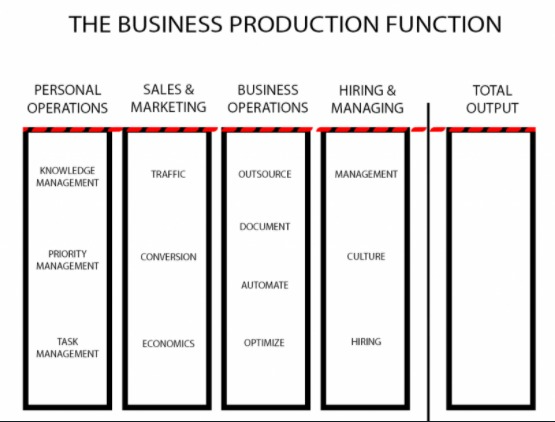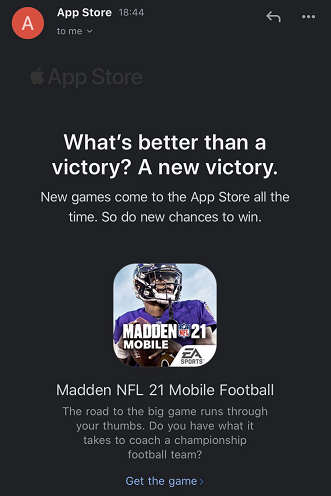
2013 was a big year for me. But at the end of it, I was left wondering if it had been a hopeless waste of time.
I had been thinking about quitting my job and starting up, for a while. But I took the plunge in Jan 2013.
Got two solid co-founders, an interesting SaaS idea, and a few months of runway. Thus began the entrepreneurial dream.
Fast forward 10 months.
The product was ready, customers were mildly interested. But it was clear it wouldn’t work.
It was a structural effort-value mismatch. A long sales process and too much integration effort, but not a must-have product.
We tried many things but the writing was on the wall. The revenue would never justify the effort.
And here’s the other thing: we were running out of runway (personal savings). We couldn’t continue paying salaries for much longer.
So that was it then – end of the entrepreneurial dream? 12 squandered months, and then sanity prevails?
Time to go back to a regular salaried job?
Before we talk about what happened next, let’s take a short break and talk about… tennis.
The Amateur Game of Tennis.
One of my favorite David Foster Wallace (he of “This is water” fame) lines is from his essay, Derivative Sport in Tornado Alley:
I couldn’t begin to tell you how many tournament matches I won between the ages of twelve and fifteen against bigger, faster, more coordinated, and better-coached opponents simply by hitting balls unimaginatively back down the middle of the court in schizophrenic gales, letting the other kid play with more verve and panache, waiting for enough of his ambitious balls aimed near the lines to curve or slide via wind outside the green court and white stripe into the raw red territory that won me yet another ugly point.
It wasn’t pretty or fun to watch, and even with the Illinois wind I never could have won whole matches this way had the opponent not eventually had his small nervous breakdown, buckling under the obvious injustice of losing to a shallow-chested “pusher” because of the shitty rural courts and rotten wind that rewarded cautious automatism instead of verve and panache.
In professional tennis, Federer wins by hitting the ball accurately to the far corner. But in amateur tennis, you win simply by not hitting the ball out of bounds.
In fact, in amateur tennis, you don’t win matches. You avoid losing them.
It’s boring, yes. But that’s a feature, not a bug.
And it’s surprising how far you can go, by just following this dictum: Keep it simple.
Ankesh Kothari has another great example, in How to participate in the Olympics without any skill:
Elizabeth Swaney participated in the 2018 Winter Olympics in freestyle skiing. She skied straight without performing any tricks that the sport is known for. And she came in dead last. That’s not the surprising part however.
The surprising part is that she had never won any skiing competition in her whole life, and yet she qualified for the Olympics!
How can one qualify for the Olympics without winning any competition at all?
Swaney did one thing better than anyone else. She showed up. She attended all of the qualifying events in the two years before the Olympics. All of them. She didn’t miss a single one. And in all of the events, she skied straight, never falling down. Many of the contestants would do tricks and swirls and jumps in the air to show their skills. And many of them would inadvertently fall. Swaney never fell once.
And that’s how, she outperformed her more skilled colleagues and got enough points to qualify for the Olympics without winning any competition. Because she never failed.
Now, this is not just an idea from sport. You’ve heard of it before…
Inversion: A surprisingly powerful idea.

One of Charlie Munger’s pet mental models is Inversion.
It’s a simple but profound idea.
To win, don’t lose.
Morgan Housel has a great paragraph about how Warren Buffett did exactly this:
There are over 2,000 books picking apart how Warren Buffett built his fortune. But none are called “This Guy Has Been Investing Consistently for Three-Quarters of a Century.”
But we know that’s the key to the majority of his success; it’s just hard to wrap your head around that math because it’s not intuitive. There are books on economic cycles, trading strategies, and sector bets. But the most powerful and important book should be called “Shut Up And Wait.”
If you take away Buffett’s top 10 bets, he would look quite mediocre. The two secrets of his success are:
- Not striking out. He stays within his circle of competence, so he never risks complete ruin.
- He’s been doing this consistently for 75 years
That’s what winning is mostly: not losing.
Over a 40 year career, as long as you don’t shoot yourself in the foot, you’ll win.
In a power law world, optimize for staying in the game.
In a power law world, effort ≠ outcomes.
Luck plays a big role. One big break can make all the difference.
In such situations, it’s important to stay in the game.
It’s like surfing – you need to stay in the water. You need to be patient, and lie in wait for the big wave.
It’s hot out there. You might be ready to leave in an hour. “The water’s quiet today, let’s go grab a beer.”
And just as you step out, there comes a monster wave!
That’s why…
Do what you can to stay out there.
Don’t burn out. Keep adequate runway.
Keep experimenting and trying different things – you don’t know what will click.
But don’t take existential risks. Take small risks that you can manage.
Nowhere is this truer than in the case of startups. 90% of startups fail. A tiny proportion reach steady profitability. And a much tinier proportion create life-changing wealth.
So… I’m going to give you some strange advice.
Don’t be like Elon Musk.
Elon Musk is the archetypal visionary entrepreneur. Ignore naysayers, stick to your vision, and win big.
But again, don’t be like Elon Musk!
He bet all his wealth throwing one last Hail Mary. And he did that several times. Funding one last launch for SpaceX after all the previous ones had failed. Saving Tesla from the jaws of bankruptcy.
In this universe, it all worked out and he’s the world’s richest man. But it so easily might not have worked, and he would have flamed out.

So don’t be like Elon Musk. Be like Phil Knight instead.
In 1966, his company, Blue Ribbon Sports, was running out of cash to expand. His bank refused to give him working capital. And the only other bank in town had already rejected his application!
So he went back to work as a CPA at PwC. Plowed most of his salary back into the business to make it work.
He did this for 5 years.
First, the company stayed barely alive. But soon, some of its experiments started working.
The company still exists today, btw. You may know of it as Nike.
Quick interlude: If you like what you’re reading, don’t forget to subscribe! Many say Sunday Reads is the best email they receive all week.
Coming back to my story.
Where did we leave off?
Oh yes, me staring at a blank wall and a vanishing bank balance, wondering if this was it.
But then I asked myself, “Did you really expect that your first idea would be a hit?”
Of course not. So, the answer was clear: Do whatever we can to keep going.
So I went back to my consulting firm. Luckily I had enough trust in the system to work part-time (8-16 hours a week) on specific projects.
I put all my income back into the business. My co-founder did the same.
We pivoted the company and hired developers to build a consumer-facing app instead.
And the payoff came soon after.
We launched the product within 5 months. And within one month of launch, we had 18K users. We were onto something!
I’ve written before about what happened next. How we went from ~20K users to 200K users, with *zero* marketing spend.
But it all started with that one move. Flipping from default dead to default alive.
What did I learn?
At the highest level, this is what I learned: To win, don’t lose.

In life and business, winning is not as much about spectacular victory, as it is about *not losing*.
Do the small things right and don’t die, and over a 40 year career, you’ll win big.
More specifically, I came away with three lessons:
#1. Optimize to stay in the game, in a power law world.
When luck is a big factor, you need to have as many “at-bats” as possible. So prioritize staying alive.
To win big, you need to take risks. You need to experiment. But never take the risk of ruin, no matter how small.
Don’t play Russian roulette, even if the gun has a hundred slots and just one bullet.
Take risks, but also protect yourself. When in doubt, remember the barbell strategy (I also wrote about the barbell strategy for crypto investing here).
#2. When you see an opening, swing hard!
When the big wave does come, that’s the time for action!
In late 2014, we saw an opportunity to partner with PAYBACK (India’s largest loyalty player at the time, with ~50M users). We went all-out to get the deal (including a lot of negotiation prep: Never Split the Difference is a great resource. My summary here).
We also guerrilla-ed our way into a free video endorsement from a movie celebrity. But that’s a story for another day.
#3. Keep it simple.
When you’re about to try something new in your business, ask yourself:
- Is this like curving the ball into the top corner? What if I miss? Is it game over?
- Or is there something simpler I can do, to keep the ball in play?
When in doubt, keep the degree of difficulty low. Make it easy.
Stack a few easy steps on top of each other, and voila! You have a 10/10 triple somersault.
PS. There are many great examples of successful entrepreneurs who kept their previous jobs when they started up.
The most fascinating is Herb Kelleher, who kept his private law practice for 14 years after starting Southwest Airlines.
Read that again – 14 years, running a frigging airline as a side hustle!
More in my twitter thread here.









